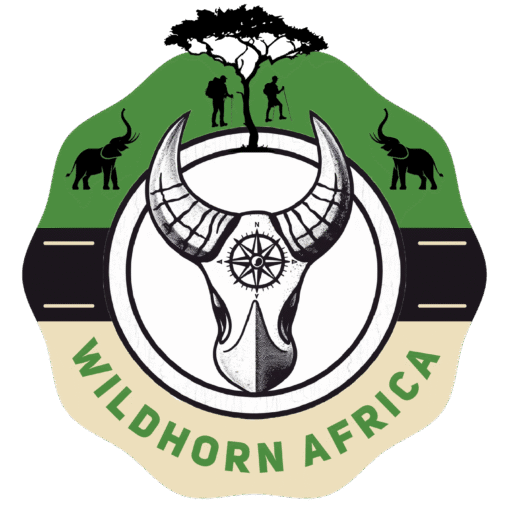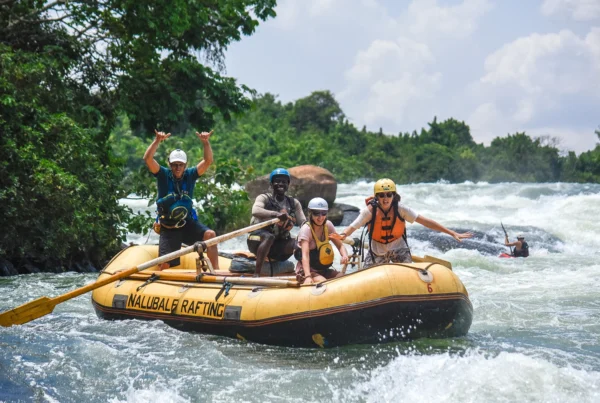Hidden Costs of Traveling in Uganda | Complete Uganda Travel Budget Guide 2026
When travelers dream of Uganda — that lush, vibrant land where mountain gorillas roam the misty jungles of Bwindi, the Nile roars through Murchison Falls, and savannahs stretch endlessly beneath golden skies — they imagine a place of untamed wonder. And indeed, Uganda delivers that and more. But behind every seamless safari or cultural adventure lies careful preparation, and at the heart of that preparation is one of the most important questions every traveler must ask: what are the hidden costs and factors to consider in a Uganda travel budget?
While many visitors focus on flights, accommodation, and park fees, Uganda’s beauty is layered with logistical and experiential details that can quietly add to the cost of travel. These are not unnecessary expenses but the realities of travel in a country that values conservation, safety, and authentic experience. Understanding these “hidden” or easily overlooked costs helps travelers plan more realistically — ensuring they explore the Pearl of Africa without financial surprises along the way.
This in-depth guide explores the true cost of traveling to Uganda — not just the numbers, but the context behind them. From permits and tipping to connectivity, cash handling, and seasonal changes, every factor contributes to shaping a safari that is not only affordable but also fulfilling.
Understanding Uganda’s Travel Cost Structure
Uganda’s tourism industry operates within a unique framework. As a country deeply committed to conservation, much of its tourism revenue directly supports wildlife protection, local communities, and national park maintenance. Unlike destinations where mass tourism drives prices down, Uganda prioritizes sustainability and exclusivity, especially in areas like gorilla and chimpanzee trekking.
The official costs — including permits, accommodation, park fees, and transport — form the visible part of a traveler’s budget. Yet, the hidden costs often emerge through smaller, day-to-day realities that come with exploring a developing, adventure-oriented destination. These include tipping, currency exchange, connectivity, porter services, insurance, fuel fluctuations, and local taxes, among others.
By anticipating these details, travelers can move beyond budgeting merely to afford the trip — and instead plan to experience Uganda comfortably, ethically, and without stress.
Permit Fees: The Foundation of Wildlife Encounters
One of the most significant yet often underestimated costs in Uganda travel is the permit system, especially for primate trekking. For those visiting to see mountain gorillas or chimpanzees — arguably the country’s most powerful draw — permits are mandatory, limited, and non-negotiable.
A gorilla trekking permit currently costs USD 800 per person, while a chimpanzee tracking permit ranges from USD 100 to 250, depending on the park. These fees are not arbitrary; they directly fund conservation programs, ranger salaries, anti-poaching patrols, and community development initiatives in regions bordering protected areas.
What travelers often overlook is that permits are non-refundable and date-specific, meaning that any delay, illness, or missed trek due to weather or fatigue still counts as a used permit. It’s a cost that demands not just money but preparedness. Adding flexibility days or insurance that covers permit cancellation helps protect this investment — a wise yet often forgotten consideration in travel budgets.
Transportation Realities: The Cost of Moving Through Beauty
Uganda’s breathtaking diversity — from the Rwenzori Mountains to the Kidepo plains — means that every safari involves significant movement. Yet the country’s road infrastructure, while improving, can make travel time-consuming, especially to remote parks. The cost of transportation therefore extends beyond mere fuel.
Most safari operators use 4×4 vehicles designed to handle rugged terrain, with professional driver-guides. Daily vehicle hire often ranges from USD 150 to 250, including driver fees and maintenance but excluding fuel. Depending on distances, fuel expenses can add another USD 50–100 per day.
For those opting for domestic flights to save time, costs rise further. Local airlines such as Aerolink and Bar Aviation connect Entebbe to destinations like Kihihi (for Bwindi) and Kasese (for Queen Elizabeth), but one-way fares typically cost between USD 200 and 350. Additionally, transfers to and from small airstrips sometimes require private shuttles or lodge pickups — subtle costs that can add up if not included in the safari package.
Even travelers staying in urban areas encounter smaller transport costs: taxis, boda-bodas (motorbike taxis), or private car hires. While inexpensive individually, they can accumulate during multi-day stays. Understanding these mobility costs ensures that the beauty of Uganda’s roads enhances rather than strains the experience.
Tipping: The Silent Expression of Gratitude
Tipping, while not compulsory in Uganda, has become an integral part of the travel experience, reflecting appreciation for service and effort. Yet, many first-time visitors underestimate or overlook its impact on their budget.
Safari guides, porters, lodge staff, and community hosts all play vital roles in crafting seamless experiences. Guides, for instance, are not only drivers but also wildlife experts, interpreters, and logistical coordinators — working tirelessly from dawn to dusk. Porters assist trekkers on steep mountain paths, often carrying equipment or offering support through dense forests.
Typical tipping guidelines suggest USD 10–20 per day for guides, USD 5–10 for porters, and USD 5 per day for lodge staff pools, depending on the level of service. In high-end lodges, envelopes are sometimes provided for discretion. While the total may seem modest per person, over a multi-day itinerary, tipping can easily reach USD 150–250 per traveler, a figure worth incorporating from the outset.
Tipping not only rewards hard work but also directly uplifts livelihoods in rural areas — a meaningful way to give back to the communities that sustain Uganda’s tourism magic.
Meals, Drinks, and Dining Realities
Many safari packages in Uganda include full-board accommodation, covering breakfast, lunch, and dinner. However, not every trip is structured this way. Meals in urban centers, during transit, or on free days can add to costs that travelers often forget to include.
A simple meal at a local restaurant may cost USD 5–10, while mid-range dining in Kampala or Entebbe averages USD 15–30 per person. For travelers preferring international cuisine or wine, the bill can rise to USD 40–60 per meal. Beverages, especially imported alcohol or espresso-based coffee, are typically priced higher than local alternatives.
Additionally, while most lodges provide safe drinking water, bottled water purchases during travel days, hikes, or community visits add incremental costs. Staying hydrated in Uganda’s warm climate often means consuming several bottles daily — a small but continuous expense that grows across two weeks of travel.
Dining costs may not drastically change the total safari budget, but they affect daily spending patterns — especially for travelers combining urban stays with wilderness adventures.
Currency Exchange and Transaction Charges
Uganda operates on the Ugandan Shilling (UGX), a stable but cash-oriented currency. While US dollars are accepted for major transactions like park permits and lodge payments, local purchases often require shillings. The hidden cost here lies in currency exchange and transaction fees.
Exchanging money at airports or hotels often yields lower rates than licensed forex bureaus in cities. Furthermore, only crisp, recent US dollar notes (issued after 2009) are accepted, and small denominations typically attract poorer rates. This catches many travelers unaware, leading to unnecessary losses or payment complications.
Credit and debit cards are accepted at high-end lodges and hotels, but each transaction usually incurs 3–5% surcharges. ATMs, while widely available in towns, have withdrawal limits and may impose foreign card fees. Budgeting for these small financial inefficiencies — and carrying a balance of cash and cards — prevents stressful surprises in rural areas where electronic payment options are limited.
Visa, Vaccinations, and Health Costs
Every journey begins with entry requirements, and Uganda’s are straightforward yet essential. Most travelers require an entry visa, costing USD 50 for single entry or USD 100 for the East African Tourist Visa, which covers Uganda, Kenya, and Rwanda. These fees are paid online via Uganda’s eVisa system or occasionally on arrival.
However, the real hidden costs lie in health preparation. Uganda requires proof of yellow fever vaccination, and travelers are strongly advised to get immunized against hepatitis A and B, typhoid, meningitis, and tetanus. Depending on the country of residence, these vaccinations can cost USD 100–300 combined.
Additionally, malaria prevention is crucial. Antimalarial tablets, insect repellents, and mosquito nets (if not provided by lodges) add small yet vital expenses. Travel insurance that covers medical emergencies and evacuation — typically 5–7% of the total trip cost — further ensures peace of mind.
These health-related costs, though not glamorous, form the foundation of safe and responsible travel. Ignoring them can lead not only to financial strain but also to avoidable health risks in tropical conditions.
Park Fees and Conservation Levies
Uganda’s national parks are jewels of biodiversity, and entry fees contribute directly to their preservation. Each park charges daily fees — usually between USD 40 and 50 per person — which are separate from activity permits.
However, many travelers overlook conservation levies, community fees, or special activity surcharges. Certain lodges within protected areas include these in their rates, while others list them separately. Night game drives, birding walks, or private guides can each carry additional costs.
Some parks, such as Kidepo Valley or Mgahinga, require multiple-day stays due to their remote locations, meaning entry fees multiply accordingly. Travelers combining several parks should therefore calculate cumulative access fees rather than per-day averages.
These hidden conservation costs, while easy to underestimate, are among the most meaningful investments travelers make in Uganda’s ecological future.
Porterage and Trekking Support: The Unspoken Lifesavers
For many, gorilla trekking in Uganda is a once-in-a-lifetime experience — but it is also physically demanding. Trekking through dense forests, steep slopes, and humid terrain requires endurance, and even the fittest travelers often find themselves relying on porters for assistance.
Hiring a porter costs around USD 20–30 per trek, a small price for invaluable support. Porters not only carry equipment but also lend stability during climbs and descents. Their work sustains families living near the parks and contributes to community development funds.
Additionally, some travelers hire walking sticks, rain ponchos, or gaiters from local vendors near park entrances — minor expenses that significantly enhance comfort. These small services, often unplanned for in advance budgets, become essential once trekking begins.
Communication and Connectivity
While Uganda’s urban centers enjoy reliable mobile coverage, connectivity in rural regions can be patchy or nonexistent. Most travelers purchase local SIM cards (MTN or Airtel) upon arrival, which cost USD 2–5, with data packages averaging USD 10–20 depending on usage.
In remote safari lodges, Wi-Fi access may be limited to common areas or provided only during certain hours due to generator usage. Some high-end lodges offer satellite connectivity, but at an additional fee. For digital nomads or professionals needing consistent online access, portable Wi-Fi devices or extra mobile data can quietly inflate daily spending.
Factoring in connectivity ensures that travelers remain comfortably connected without unexpected digital isolation — particularly useful for navigation, communication with guides, or sharing Uganda’s breathtaking beauty with the world in real time.
Souvenirs and Local Crafts: The Joyful Extras
Uganda’s markets brim with vibrant handwoven baskets, traditional drums, batik fabrics, wooden sculptures, and coffee beans — irresistible mementos of a journey well lived. Yet, these treasures, though modestly priced individually, can cumulatively form a noticeable expense.
Buying directly from artisans or cooperatives supports local craftsmanship and ensures fair pricing. While smaller souvenirs might cost USD 10–30, larger items like paintings or handmade jewelry can range higher, especially in cultural centers like Kampala’s Craft Village or Jinja’s markets.
Travelers should also account for extra baggage allowances if purchasing bulky crafts or coffee bags. Airlines charge between USD 50–100 per extra piece, and shipping costs from Uganda vary based on weight and destination. Planning ahead for souvenir purchases transforms spontaneous joy into budgeted satisfaction.
Seasonality and Price Fluctuations
Uganda’s tourism seasons influence not only park access but also pricing. The dry seasons — June to September and December to February — are peak travel months, marked by clear skies, excellent road conditions, and abundant wildlife sightings. However, they also bring premium rates on accommodation, flights, and activities.
The wet seasons (March to May and October to November) lower prices by 15–30%, as some lodges and operators offer promotional rates. While rains can affect travel schedules, the lush greenery, reduced crowds, and vibrant photography opportunities make low-season travel both economical and rewarding.
Understanding these fluctuations allows travelers to align budgets with seasonal benefits, ensuring that savings do not compromise experience.
The Human Element: Unexpected Opportunities and Gratuities
Uganda is a country of warmth and spontaneity. Along every route, travelers encounter opportunities that, though unplanned, enrich the journey — a local dance performance, a coffee tasting with farmers, or a cultural visit to a Batwa community. These interactions often carry optional contributions or small fees that directly support local livelihoods.
Similarly, some travelers extend gratitude through school donations or village gifts such as stationery or clothing. While voluntary, these gestures add to the overall spend. Factoring a modest “human connection budget” ensures that generosity flows naturally, without financial strain.
In Uganda, the most meaningful experiences often come from these unscripted encounters — priceless in impact, yet deserving of tangible appreciation.
The Role of Tour Operators in Managing Hidden Costs
The easiest way to anticipate and manage hidden costs is by partnering with a reputable local tour operator. Companies such as WildHorn Africa excel in creating transparent, well-detailed itineraries that clarify inclusions, exclusions, and contingencies.
Experienced operators handle logistical complexities — from securing permits and negotiating lodge rates to organizing transfers and advising on tipping customs. Their local expertise helps travelers avoid pitfalls such as inflated prices, unlicensed services, or unplanned expenses.
Working with professionals also ensures accountability. Reputable operators provide itemized quotations, clarify payment terms, and maintain communication throughout the journey. This allows travelers to focus on the experience rather than the expenditure, turning potential “hidden costs” into predictable, manageable elements.
Conclusion: Clarity Is the Real Luxury in Travel
Traveling through Uganda is not just about seeing — it is about feeling. The mist of the rainforest, the thrill of a lion’s roar, the laughter of children in a distant village — these moments are the true currency of experience. But to experience them freely, one must travel wisely, with awareness of the practical and the hidden.
Every cost, from the gorilla permit to the porter’s helping hand, contributes to the larger story of sustainable travel — one that uplifts communities and preserves wilderness. Understanding and anticipating these expenses transforms budgeting from a constraint into a form of empowerment.
For travelers seeking transparency, comfort, and genuine value, it is best to book their Africa tours and safaris with WildHorn Africa, a trusted operator known for integrity, expertise, and personalized service. With their guidance, every dollar is accounted for — and every moment becomes priceless.





 WildHorn Africa – Authentic and unforgettable tours across Africa, guided by local experts who know the land, wildlife, and culture best.
WildHorn Africa – Authentic and unforgettable tours across Africa, guided by local experts who know the land, wildlife, and culture best.


